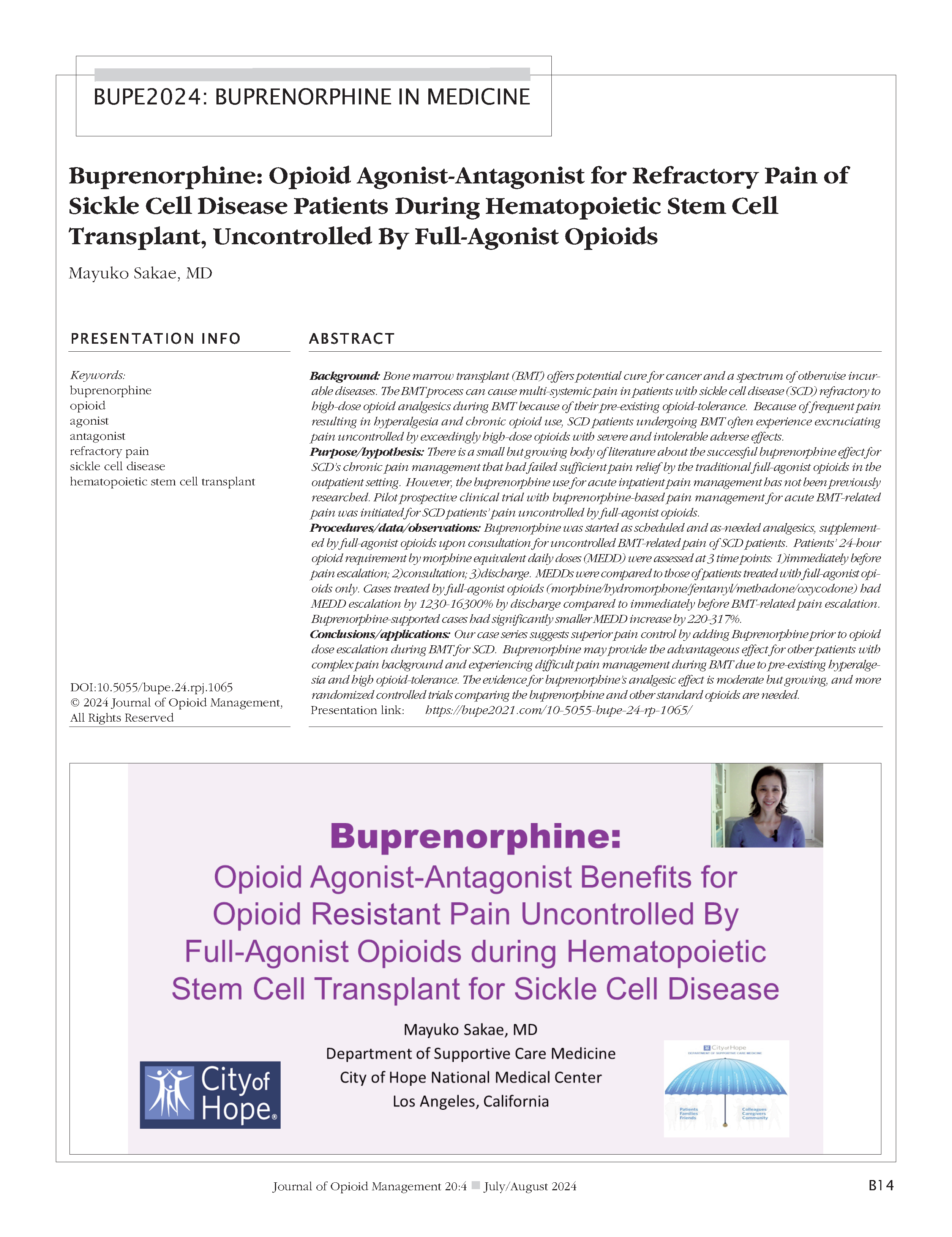Buprenorphine: Opioid Agonist-Antagonist for Refractory Pain of Sickle Cell Disease Patients During Hematopoietic Stem Cell Transplant, Uncontrolled By Full-Agonist Opioids
DOI:
https://doi.org/10.5055/bupe.24.rpj.1065Keywords:
buprenorphine, opioid, agonist, antagonist, refractory pain, sickle cell disease, hematopoietic stem cell transplantAbstract
Background: Bone marrow transplant (BMT) offers potential cure for cancer and a spectrum of otherwise incurable diseases. The BMT process can cause multi-systemic pain in patients with sickle cell disease (SCD) refractory to high-dose opioid analgesics during BMT because of their pre-existing opioid-tolerance. Because of frequent pain resulting in hyperalgesia and chronic opioid use, SCD patients undergoing BMT often experience excruciating pain uncontrolled by exceedingly high-dose opioids with severe and intolerable adverse effects.
Purpose/hypothesis: There is a small but growing body of literature about the successful buprenorphine effect for SCD's chronic pain management that had failed sufficient pain relief by the traditional full-agonist opioids in the outpatient setting. However, the buprenorphine use for acute inpatient pain management has not been previously researched. Pilot prospective clinical trial with buprenorphine-based pain management for acute BMT-related pain was initiated for SCD patients’ pain uncontrolled by full-agonist opioids.
Procedures/data/observations: Buprenorphine was started as scheduled and as-needed analgesics, supplemented by full-agonist opioids upon consultation for uncontrolled BMT-related pain of SCD patients. Patients' 24-hour opioid requirement by morphine equivalent daily doses (MEDD) were assessed at 3 time points: 1)immediately before pain escalation; 2)consultation; 3)discharge. MEDDs were compared to those of patients treated with full-agonist opioids only. Cases treated by full-agonist opioids (morphine/hydromorphone/fentanyl/methadone/oxycodone) had MEDD escalation by 1230-16300% by discharge compared to immediately before BMT-related pain escalation. Buprenorphine-supported cases had significantly smaller MEDD increase by 220-317%.
Conclusions/applications: Our case series suggests superior pain control by adding Buprenorphine prior to opioid dose escalation during BMT for SCD. Buprenorphine may provide the advantageous effect for other patients with complex pain background and experiencing difficult pain management during BMT due to pre-existing hyperalgesia and high opioid-tolerance. The evidence for buprenorphine's analgesic effect is moderate but growing, and more randomized controlled trials comparing the buprenorphine and other standard opioids are needed.

Downloads
Published
How to Cite
Issue
Section
License
Copyright 2005-2025, Weston Medical Publishing, LLC and Journal of Opioid Management. All Rights Reserved.










